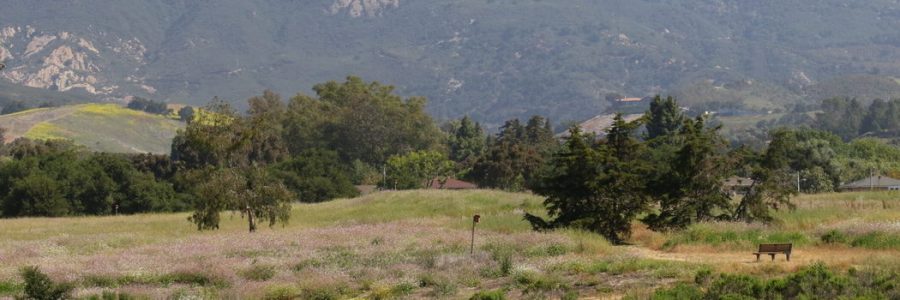Submitted by Mark Holmgren
This is an update on the post-drought progress towards recovery of White-tailed Kites in the Goleta Valley. We are approaching the middle of the Kite breeding period. Recall that last year we had only two breeding events—at western More Mesa and western Ellwood Mesa. In 2015, we also had only two. They successfully bred somewhere in western Goleta Slough and at western More Mesa, with nest starts, but no completions, at Winchester Cyn and San Antonio Creek trail.
This year we know of only 3 occupied territories. At 2 of them—Lake Los Carneros and western More Mesa—breeding is progressing with chicks visible in nests. This morning two fledgling Kites with an adult loosely attending them was a surprise at western Ellwood Mesa. Prior to today we knew that adults were present at Ellwood, but we had no idea they were well into breeding. These two babies were visible high in Eucalyptus from the southern end of Pebble Beach Drive. https://flic.kr/p/TLGzt2
These are rather early-in-the-breeding period nestings, which offers the possibility that these three pairs might attempt second nests.
We are quite certain that no kites are occupying many of their traditional foraging areas this spring. Those include San Marcos Foothills, Glen Annie/Dos Pueblos High School, central Goleta slough, and western Goleta Slough. But these areas could become occupied yet this spring. We could use some surveillance to determine whether Kites are establishing territories in Winchester Canyon, western Isla Vista, eastern More Mesa, and eastern Ellwood Mesa. Any and all reports of kites seen within the last 2 weeks would be most welcome. For more information on Kites, see below.
Thanks to all Kite Watchers, thanks to SB Audubon Society for supporting this effort, and Good Birding,
Mark Holmgren
~~ ~~ ~~ ~~ ~~
To view a map of White-tailed Kite breeding records going back to the 1960s in Santa Barbara County:
- go to: https://goo.gl/AJQxKj
- Click on Map of Latitude > Satellite > blue Filter button > Common Name >
- Scroll to White-tailed Kite.
- Check the box next to White-tailed Kite and only those records will show on the aerial photo.
- Click on any red dot to display some of the data for that record.
To see Kite breeding year-by-year, add a 2nd Filter. Choose Date. We do not show active nests.
This is the Santa Barbara Breeding Bird Study using Google Fusion Tables. We have 4261 records of breeding events in the county and we want your observations, either recent or historical. Contact me for guidance on how to contribute.
~~ ~~ ~~ ~~ ~~
A Short History of the White-tailed Kite Monitoring Effort
The seed giving rise to the Santa Barbara White-tailed Kite Project was a 1973 Ph.D. dissertation by Lee Waian at UCSB. His elucidation of Kite nesting and roosting behavior in the Goleta area led to a County policy that provides special protection for Kites beyond that provided to other Fully Protected species. That protection exists today, in theory if not in practice.
Forty years ago, the Goleta Valley White-tailed Kite population was as high as 160 individuals. In the middle 1990s, our Kite population vacillated between 25-50 individuals. The Kite monitoring effort began in the late 1980s with the goal of assuring that the information was available to properly implement protective policies. By the early 2000s, Kites lost or abandoned the habit of communal roosting. As Goleta continues to infill, the habitats that support kites are diminishing, and the corridors that link our open spaces are pinched or absent. It will take a concerted effort and new and novel techniques to rebuild the Kite population to what it once was.
The Santa Barbara White-tailed Kite Project has studied several facets of Kite natural history including population trends, breeding and foraging ecology, diet, and habitat requirements in the Goleta Valley. Looking forward, the work ahead will require field surveillance, new techniques to recover prey populations as well as habitat, and development of models to create functioning connections among open spaces.
Mark Holmgren

